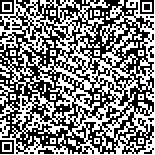| 摘要: |
| [摘要] 目的 分析阿兹夫定治疗肾移植受者中型新型冠状病毒感染的疗效及安全性。方法 回顾性分析2022年12月至2023年2月中国人民解放军陆军军医大学第一附属医院肾脏内科收治的65例中型新型冠状病毒感染的肾移植受者的临床资料,其中使用阿兹夫定治疗45例(阿兹夫定组),对症治疗20例(对症治疗组)。分析两组新型冠状病毒核酸转阴时间、治疗后总病程时间、治疗7~10 d后症状好转率、治疗7~10 d后CT好转率、危重症转化率及药物并发症发生率。结果 阿兹夫定组的核酸转阴时间为(12.98±5.77)d,治疗后总病程时间为(14.80±6.35)d,治疗7~10 d后症状好转率为93.33%,治疗7~10 d后CT好转率为80.00%,危重症转化率为11.11%,药物并发症发生率为17.78%,停用阿兹夫定后好转。对症治疗组核酸转阴时间为(18.85±8.44)d,治疗后总病程时间为(20.00±9.82)d,治疗7~10 d后症状好转率为70.00%,治疗7~10 d后CT好转率为60.00%,危重症转化率为25.00%。阿兹夫定组核酸转阴时间、总病程时间、治疗后症状好转率均优于对症治疗组,差异有统计学意义(P<0.05)。结论 阿兹夫定治疗中型新型冠状病毒感染的肾移植受者效果好,安全性高,应合理调整剂量,防止肝功能损害。 |
| 关键词: 肾移植 新型冠状病毒感染 阿兹夫定 肺部感染 临床结局 |
| DOI:10.3969/j.issn.1674-3806.2023.10.06 |
| 分类号:R 617 |
| 基金项目: |
|
| Analysis of the efficacy and safety of azvudine in treating moderate COVID-19 in kidney transplant recipients |
|
YANG Meng, ZHAO Hong-wen, XU Ze-liang, et al.
|
|
Department of Nephrology, the First Affiliated Hospital of Army Medical University of the Chinese People′s Liberation Army, Chongqing 400000, China
|
| Abstract: |
| [Abstract] Objective To analyse the efficacy and safety of azvudine in treating moderate coronavirus disease 2019(COVID-19) in kidney transplant recipients. Methods The clinical data of 65 cases of kidney transplant recipients with COVID-19 who were diagnosed and treated in Department of Nephrology, the First Affiliated Hospital of Army Medical University of the Chinese People′s Liberation Army from December 2022 to February 2023 were retrospectively analyzed, including 45 cases receiving treatment with azvudine(azvudine group) and 20 cases receiving symptomatic treatment(symptomatic treatment group). The negative conversion time of severe acute respiratory syndrome coronavirus 2(SARS-CoV-2) nucleic acid, the total course time of disease after treatment, the symptom improvement rate after 7-10 days of treatment, the computed tomography(CT) improvement rate after 7-10 days of treatment, the conversion rate of critical illness and the incidence of drug complications in the two groups were analyzed. Results In the azvudine group, the negative conversion time of SARS-CoV-2 nucleic acid was (12.98±5.77)days; the total course time of disease after treatment was (14.80±6.35)days; the symptom improvement rate after 7-10 days of treatment was 93.33%; the CT improvement rate after 7-10 days of treatment was 80.00%; the conversion rate of critical illness was 11.11% and the incidence of drug complications was 17.78%, and all the complications were improved after discontinuation of azvudine. In the symptomatic treatment group, the negative conversion time of SARS-CoV-2 nucleic acid was (18.85±8.44)days; the total course time of disease after treatment was (20.00±9.82)days; the symptom improvement rate was 70.00% after 7-10 days of treatment; the CT improvement rate after 7-10 days of treatment was 60.00% and the conversion rate of critical illness was 25.00%. The negative conversion time of SARS-CoV-2 nucleic acid, the total course time of disease and the symptom improvement rate after treatment in the azvudine group were better than those in the symptomatic treatment group, and the differences were statistically significant(P<0.05). Conclusion Azvudine is effective and safe in treating moderate COVID-19 in kidney transplant recipients. The dosage should be adjusted appropriately to prevent liver function damage. |
| Key words: Kidney transplantation Coronavirus disease 2019(COVID-19) Azvudine Pulmonary infection Clinical outcome |

